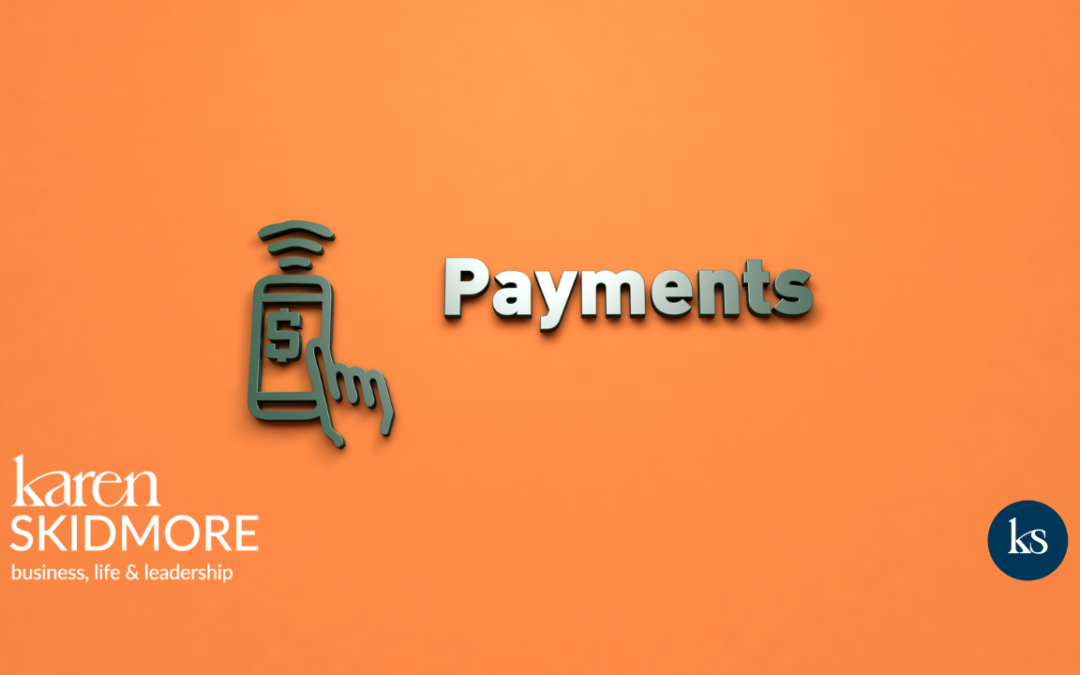There are many good reasons to offer a payment plan to your customers, but there are also a lot of assumptions that many business owners make about how they go about offering them, particularly whether they ought to be charging their clients more for taking up the payment plan option.
In this article, I want to debunk some myths and misconceptions, and help you see how positioning your payment plans can actually benefit both you and your clients.
Don’t see payment plans as recurring income
I know many business owners like to have a consistent flow of income, but to see payment plans as recurring income will actually cheat your sales mindset.
A payment plan is accepting payment for a one-off product or service; once sold, you are delivering it for a specific finite time.
Recurring income has a completely different job to do as it’s revenue from a product or service that a client continues to use each month or year, with no specific finite time until the client decides to stop buying.
Many years ago, I used to feel safer knowing that I had money coming in each month and thus was very happy for a client to take up a payment plan, but what this would do would let me off the hook of selling more over the coming months. I would make myself feel more comfortable than I actually was and would even stop selling when I saw a healthy chunk of money coming to me over the next few months. The reality was that I was spreading the money out, rather than growing the business revenue.
Don’t charge your clients more for taking a payment plan
Yes, I get the argument that it can cost the business when payment plans are defaulted or card payments don’t work, especially if you are dealing with hundreds or even thousands payment plans.
But if you know that there is always a percentage of card payments that need sorting each month, then see this is a cost to your business, in the same way your web hosting and internet usage is. Either look at how you can improve your business processes to automate as much as possible, or factor this into your overall prices.
Plus there are certain laws and regulations you need to be aware of.
In the UK, The Consumer Rights (Payment Surcharges) Regulations 2012 is now in place which made it unlawful for “merchants from charging a fee in addition to the advertised price of a transaction on the basis of a consumer’s choice of payment instrument (for example, credit card, debit card or e-money)”.
 I asked Suzanne Dibble, founder of the Small Business Legal Academy and my go-to legal advisor for her advice on the matter.
I asked Suzanne Dibble, founder of the Small Business Legal Academy and my go-to legal advisor for her advice on the matter.
“Payment plans or instalment agreements could fall foul of Consumer Credit legislation if more than 12 instalments are charged or interest (or any other fee) is charged. It has been suggested that if offering payment plans to consumers (which includes sole traders and partnerships), you express the instalment price as the full price and discount the price for pay in full, so as to be able to argue that no interest or other fees have been charged for the instalment credit. However there is no guidance that this rather artificial way of structuring things would keep you safe.”
If you are based outside of the UK, do check your own country’s regulations in regards to payment plans.
Do see payment plans as a good way of helping your clients
Your clients should never feel shamed into taking the payment plan option. If they want to choose to spread their payments over a period of time, there is often a genuine reason for it.
They may not have the money right here, right now, so don’t shame them for not having the cash. Let them make their own decisions over payments depending on their circumstances.
They may not trust you enough to pay up front and that’s OK, too. Trust is always earnt before it is given, so if your new client wants to start to see results before they are willing to commit to paying everything up front, then start giveing them the results that you are promising.
If you are attracting the kind of clients who take up payment plans as a try-before-you-buy, ie they cancel in the first month or two, and you are getting financially burnt in the process, then you have to take a hard look at your client attraction process and eligibility, as well as the quality of your product.
Perhaps you are either willing to accept anyone as a client or that you are over-promising on your product offer.
Do reward your clients for paying in full
If you can’t charge more for your payment plan option, then flip this around and reward those who want to pay upfront. I would also advise that you would want to have your clients pay you upfront if it’s possible; better to have the money in your bank, than theirs as it saves on invoice chasing at best and debt collection at worst.
Plus I like to think that when you have the money up front, it puts you in a position where you have to deliver. They’ve put their trust in you so make sure you not only give them the goods, but exceed their expectations.
You can reward them with a simple discount, although don’t be too generous! 10% may sound like a nice figure, but if you haven’t factored this discount into your overall revenue goals, you could find yourself short. Do your sums and factor any discounts into your price structure so you can achieve your sales targets.
If you don’t want to discount, or the margins are already too tight to discount further, then you can reward them by giving them access to a lower priced digital product, discount code for partner products or services (a great way of forging client referrals and recommendation with other businesses) or some other gift that does not take your time or additional costs.
Do let your clients make the decision which option they take
It would be easy to now decide that you want all your clients to take the full payment, but going heavy with the sales to persuade them to say no to the payment plan may mean you lose the sale completely.
We have a saying in our Momentum community; be committed but not attached to the outcome. Make your offer, talk through the options available but stay unattached to what your client decides. People love to buy, but often hate being sold to so think about how you position your offer so that your client feels they genuinely have the choice, rather than being bullied into it.
Do write about your payment plan options in your marketing campaigns
If you are launching a product online or running a marketing campaign, deciding when you talk about the payment plan option presents some great reasons for people to click your emails or check out your sales page.
Write about your payment plan options somewhere in your email campaign, and explain the benefits of taking advantage of it.
A technique that I have seen many big internet marketers use is to bring in another payment plan that is spread over a longer period of time at the last minute – just before the shopping cart closes – which brings the risk down and helps those people who are still sitting on the fence to say yes to the offer. (Do make sure you’ve read the advice from Suzanne above about extending payment plans for longer than 12 months.)
Do offer payment plans when your client can no longer pay their invoices
We are heading towards difficult times for some and the cost of living is on the increase. You may find more clients have agreed to buy something from you but then over a period of weeks may not be able to pay you for whatever reason.
Collecting money owed for work already delivered, or part delivered, can be a horrid and difficult process for both parties, but communication is key. So rather than write off outstanding invoices or threaten legal proceedings too early, talk about spreading payments over a longer period of time. If you do go down this route, have the conversation face to face – zoom or phone – rather than rely on emails and ensure everything is documented and agreed, with clear payment terms and invoicing dates confirmed with both parties to avoid any further disputes.
In summary, view your payment plan options as both a sales and marketing opportunity to help more clients buy your products or services, as well as a way of offering good customer service. Set yourself and your clients up for success, rather than penalise them for taking the payment option.
Ready to discover how well you are set up to attract more rewarding and better paid work?
Answer 21 yes/no questions based on your current business activities that will show you what you may be missing and what to focus on to get your next stage of growth.
Click here to take the Better Business Scorecard right now.







